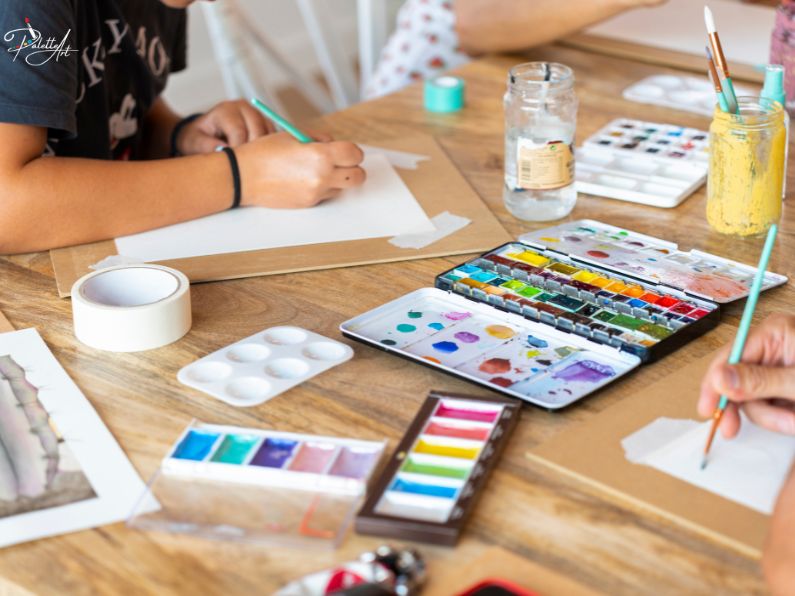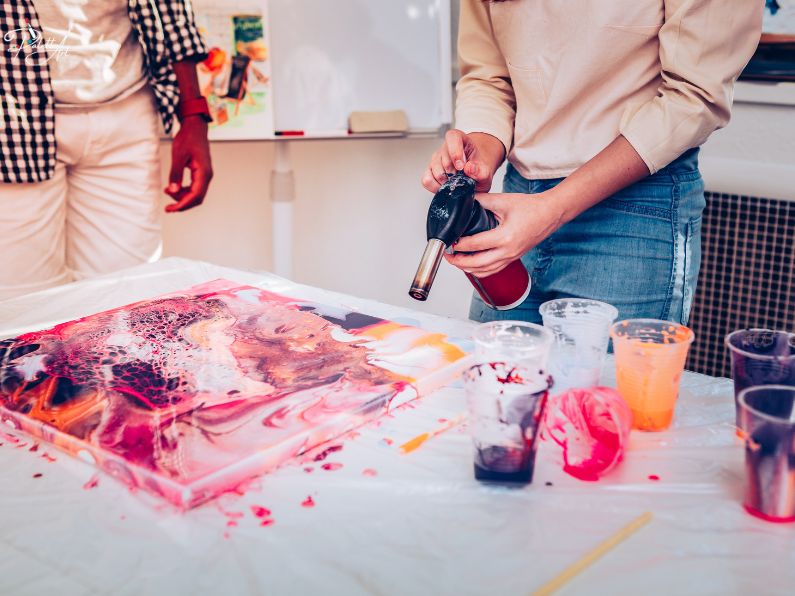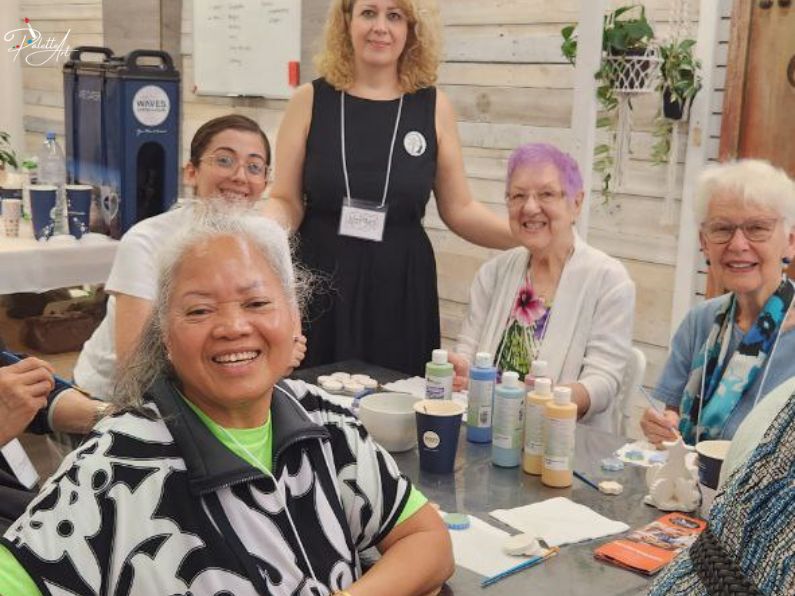Whether you’re a novice with a brush or a seasoned artist looking to expand your skills, mastering various painting techbniques can elevate your artwork to new heights. In this article, we’ll explore ten essential painting techniques for beginners and professionals alike, covering a range of mediums from watercolors to acrylics and oils. Let’s dive in and unlock the secrets of these top painting techniques.

Contents
- 1 10 Essential Techniques for Artists
- 1.1 Essential Techniques for Beginners
- 1.2 Advanced Techniques for Professional Artists
- 1.3 Top Techniques for Watercolors
- 1.4 Step-by-Step Acrylic Techniques
- 1.5 5. Oil Techniques for Realistic Art
- 1.6 6. Innovative Techniques for Abstract Art
- 1.7 7. Mixed Media Guide
- 1.8 8. Detailed Techniques for Portraits
- 1.9 9. Landscape Techniques for Artists
- 1.10 10. Unique Techniques for Creative Art
- 2 Conclusion
- 3 FAQ
10 Essential Techniques for Artists
-
Essential Techniques for Beginners
Starting your painting journey can be both exciting and daunting. To set a solid foundation, begin with essential techniques for beginners. Focus on mastering brush control, color mixing, and basic strokes. Practicing these fundamentals will build your confidence and prepare you for more advanced methods. Consider enrolling in a Painting Class for Kids to start your artistic journey early.
-
Advanced Techniques for Professional Artists
For those who have moved beyond the basics, advanced methods can add depth and sophistication to your work. Experiment with glazing, impasto, and sfumato to create stunning effects. These require precision and practice but yield impressive results. Advanced Painting Class for Adults can be incredibly beneficial in mastering these methods.
-
Top Techniques for Watercolors
Watercolor painting is renowned for its delicate and translucent qualities. Top methods for watercolors include wet-on-wet, dry brush, and gradient washes. These allow you to create soft transitions, vibrant details, and atmospheric effects in your artwork.
At Palette Art studio in New Westminster, we have had amazing experiences with our students in both children’s and adults’ painting classes. One of the favorite techniques among our students is the “wet-on-wet” watercolor technique. This technique allows students to apply wet paint onto wet paper, creating beautiful, flowing effects and soft transitions. By practicing this method, our students have discovered how to blend colors seamlessly and create stunning, ethereal artworks. This technique not only enhances their artistic skills but also boosts their confidence in experimenting with different styles and mediums.
-
Step-by-Step Acrylic Techniques
Acrylics are versatile and fast-drying, making them a favorite among many artists. Step-by-step acrylic techniques such as layering, scumbling, and glazing can help you achieve a range of textures and depths. Acrylics are also excellent for experimenting with mixed media, as they adhere well to various surfaces.

5. Oil Techniques for Realistic Art
Oil painting is known for its rich, vibrant colors and ability to create realistic art. Key techniques for realistic oil art include underpainting, glazing, and blending. These allow for subtle transitions and lifelike textures, making your subjects come to life. Painting Classes for Adults often cover these sophisticated methods in depth.
6. Innovative Techniques for Abstract Art
Abstract art thrives on innovation and creativity. Embrace innovative methods for abstract art, such as pouring, dripping, and palette knife work. These encourage spontaneity and allow you to explore new dimensions in your artwork.
7. Mixed Media Guide
Combining different materials and mediums can lead to unique and intriguing results. A mixed media guide will introduce you to the art of layering various textures, papers, and paints. This approach offers endless possibilities for experimentation and creativity.
8. Detailed Techniques for Portraits
Capturing the essence of a person requires meticulous attention to detail. Detailed techniques for portraits include glazing for skin tones, layering for hair texture, and precise brushwork for facial features. These help convey the personality and emotions of your subject.

9. Landscape Techniques for Artists
Landscapes offer a vast playground for artists. Landscape methods encompass creating depth with atmospheric perspective, using varied brushstrokes for foliage, and employing color theory for realistic skies and water. Mastering these will bring your landscapes to life.
10. Unique Techniques for Creative Art
Every artist has a unique voice and style. Exploring unique methods for creative art can help you discover your own artistic identity. Experiment with unconventional tools, surfaces, and methods to push the boundaries of traditional painting and create truly original works.
Conclusion
Whether you’re just starting or are an experienced artist, these ten essential techniques offer valuable insights and methods to enhance your craft. By mastering these, you’ll expand your artistic repertoire and bring greater depth and creativity to your work. Consider joining a Painting Class for Kids or a Painting Class for Adults to further develop your skills. Happy painting!
For more inspiration and resources, visit the Vancouver Art Gallery.
FAQ
What are some essential painting techniques for beginners to start with?
Beginners should focus on mastering brush control, color mixing, and basic strokes. These fundamentals set a solid foundation for more advanced techniques.
Which advanced painting techniques can professional artists use to enhance their artwork?
Professional artists can experiment with techniques like glazing, impasto, and sfumato. These techniques add depth and sophistication to their work.
What are the top painting techniques for watercolors?
Top watercolor techniques include wet-on-wet, dry brush, and gradient washes. These methods help create soft transitions, vibrant details, and atmospheric effects.
What are some step-by-step acrylic painting techniques for achieving different textures?
Step-by-step acrylic techniques include layering, scumbling, and glazing. These techniques allow artists to achieve a variety of textures and depths in their paintings.
Which oil painting techniques are best for creating realistic art?
Key techniques for realistic oil painting include underpainting, glazing, and blending. These methods allow for subtle transitions and lifelike textures.
How can artists incorporate innovative techniques in abstract art?
Artists can use techniques like pouring, dripping, and palette knife work. These innovative methods encourage spontaneity and exploration in abstract art.
What does a mixed media painting techniques guide typically include?
A mixed media guide covers the art of layering different textures, papers, and paints. This approach allows for endless experimentation and creativity.
What are some detailed painting techniques for creating lifelike portraits?
Detailed portrait techniques include glazing for skin tones, layering for hair texture, and precise brushwork for facial features. These methods help capture the personality and emotions of the subject.
What techniques can artists use to enhance their landscape paintings?
Landscape painting techniques include creating depth with atmospheric perspective, varied brushstrokes for foliage, and color theory for realistic skies and water.
How can artists develop unique painting techniques for creative art?
Artists can explore unconventional tools, surfaces, and methods. This experimentation helps them push the boundaries of traditional painting and create original works.


